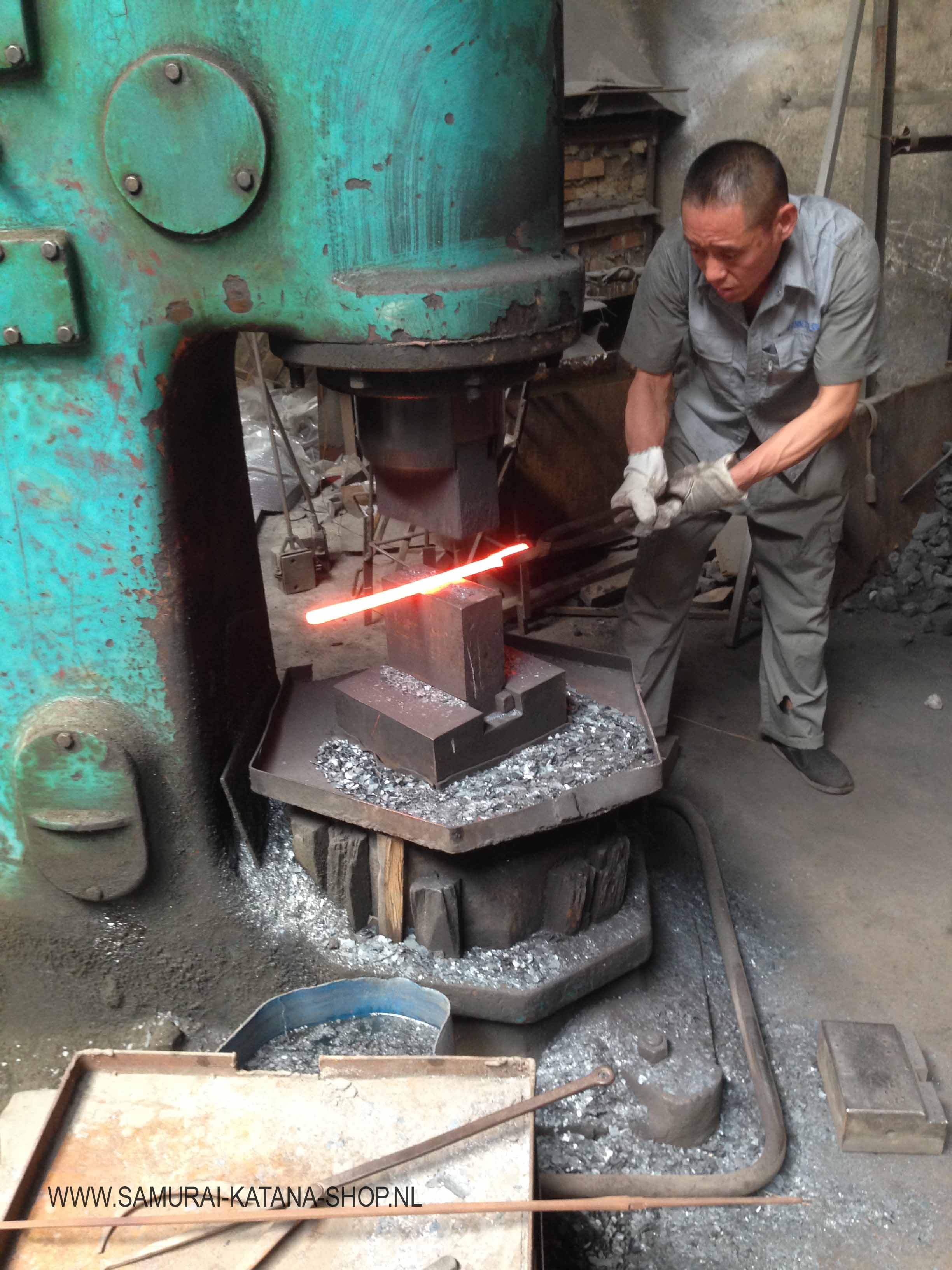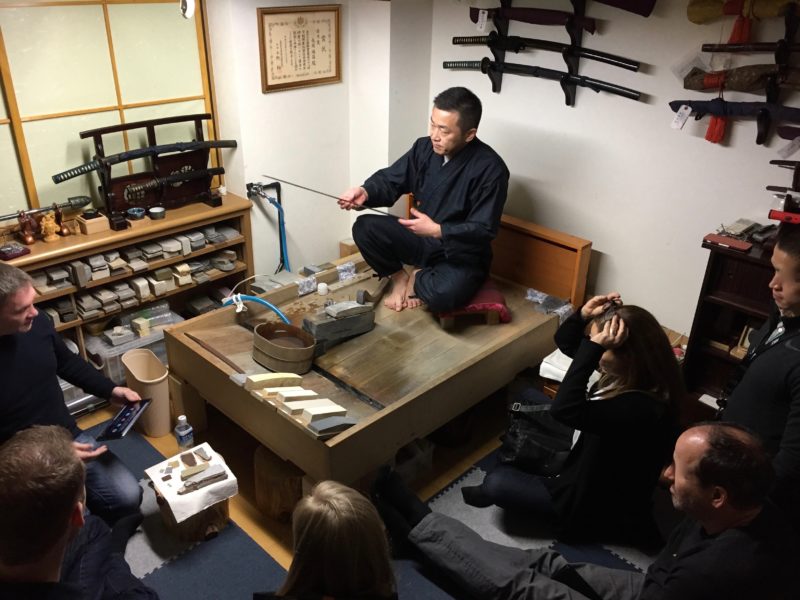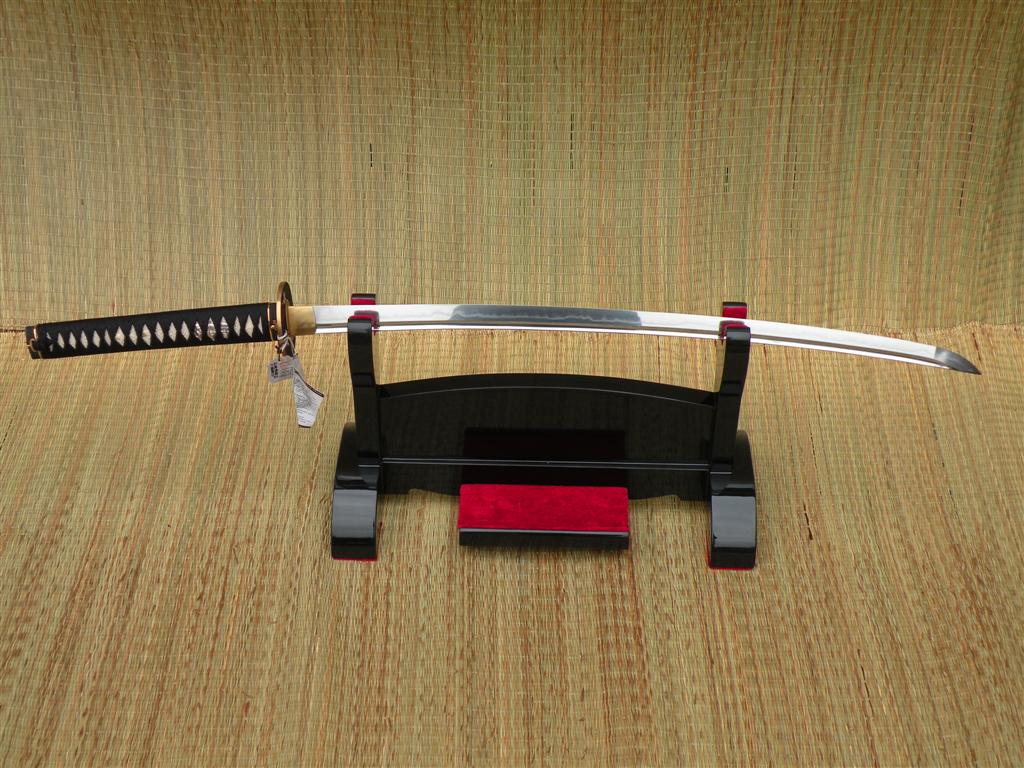Why price differences between swords?
There are considerable price differences between the various swords, but how does it come?
An authentic Japanese Katana or Shinken starts at around € 5000,- and even up to € 100.000,- but these often cannot leave Japan because they belong to important art of Japan. If you want to export an authentic Japanese sword then export permits must be issued. This is without the right connections a very complex procedure.
The difference in price with the real authentic Japanese swords is in the smith, mei or not (signature), papers (certificates), period and condition and appearance of the sword. Also, each sword is completely handmade and you will not find a second one. The composition of the fittings (koshirae) are unique and the blade is made entirely traditionally from tamahagane.
A sword that is not made in Japan can also be of very good quality and functionally not inferior to the Japanese. These production swords often come from China, Thailand, Cambodia or Korea. There are often major differences between them. There are forges that produce mainly decorative swords, which are not suitable for use. But there are also good forges that can forge a fine functional sword. The price differences that can arise here are mainly in the steel they use, the forging process (processing), the heat treatment, polishing, fittings, mounting quality and materials. Also, of course, the salary that an average worker earns is important.
Steel quality
Many samurai swords are forged from High Carbon Steel 1060, 1075 or 1095. Often you will also see a springsteel 5160 or T10 steel come along. As long as this is a High Carbon Steel, then this is fine. The Tamahagane, of course, also contains Carbon and this varies between 0.5 and 1.5. So both the cited High Carbon Steel and Tamahagane are great for forging a sharp cut. The traditional way of making Tamahagane is in a Tatara. This is a clay furnace in which iron sand or satetsu is added to charcoal. The whole process takes at least a week and involves at least 4 people. Obviously, this is different than buying billets of steel.
There are even a number of production forges, such as Paul Chen/Hanwei, that make Tamahagane steel, this will not be entirely in the traditional manner but they come close. This is because the base material is then also iron sand.
Forging of the sword
At this point the traditional Japanese way of forging certainly differs from a production forge. A production forge will hammer out the steel to the shape of the sword blade, here you will probably notice a difference whether the blade is folded or not. In fact, with many you can ask if it should be just a hand-forged or hand-forged and folded blade. This is often just hand-forged though and uses power hammers. The decorative swords are often punched out of coils with machines, these are da natural blades to hang on the wall. In the traditional way one uses Tamahagane for the blade of the katana. Hocho-tetsu (low carbon content) for the core of the blade (shingane) and the cut and outside is formed by steel with a high carbon content (nabe-gane). Also, the way of forging the steel will differ substantially from a production forge. In Japan, each blacksmith or school has its own techniques and compositions.
Here a powerhammer in the hanwei forge

Heat treatment
Differential hardening is a complex heat treatment in which the blade of the sword gets the most optimal properties for functional use. The back or body is relatively is softer than the cuts or ha, so the sword will not break easily and can absorb large blows. This treatment takes place both at a production forge and at an authentic Japanese blacksmith. The production forges have even added a type and that is the complete hardening of the blade. Once this is done properly then you also get a very sharp, strong and flexible blade. Fully hardened blades, i.e. without hamon are often a bit cheaper because the waste is less.
Blade polishing
The highly refined polishing of blades is an aspect of the blade that has been perfected especially in Japanese swords. But also medieval swords from Europe were ground and polished with water stones. Yet the process with many different stones is something you can only find with the Japanese Katana.
After the blade was finished it went to the Togishi, who went on to refine the shape and this polisher took the beauty to the next level. Polishing is divided into two main phases.
Shitaji togi (basic polishing)
Shiage togi (finishing polishing).
This process is very time consuming, but experienced forges such as huanuo and hanwei also use stones with different roughness. Also, there are ways to polish rough by machine and then do the finishing by hand. Authentic natural Japanese polishing stones are very expensive and this obviously works its way into the cost price.
Setup of a Togishi

Fittings
The parts used to assemble the sword can consist of various materials and degrees of finish. The koshirae (parts) include the tsuba, fuchi, menuki and kashira, which are usually matched. In an authentic Nihonto (Japanese sword) these are sometimes works of art in themselves and many schools can be distinguished in this. In fact, these were also specialized kodogu and tosogu artists. These individual parts are therefore also completely handmade by specialists.
In modern production forges, however, you often see differences in the quality of the fittings. Usually the copper or brass tsubas are slightly cheaper because they are easier to make. These are often cast in a mold and made in multiple numbers at once. Still, the tsubas from hanwei (paul chen)are of high quality and very detailed.
Mounting quality
In modern production forges, you see great differences between the degree of finish. This has to do with the know-how that such a sword forge has in house. The mounting quality of decorative swords is not even worth discussing, these often rattle on all sides.
With a production forge you often have all the parts separately from each other and not custom made for the particular sword. In order to finally deliver this assembled, some force is sometimes used to put everything together. As soon as you start disassembling the sword you run into this, disassembling it was okay, but reassembling it requires adjustments to all kinds of parts. The way you can disassemble a sword often says a lot about the overall quality. This does not say that you sometimes have to use some force to disassemble a hilt or tsuba, this is normal. But if you have to use excessive force or violence, or drill parts, it is often a hell of a job to get them back together again reasonably. Also, I can often tell by the ito or winding alone whether a sword is of value and whether attention has been paid to it. The ito winding is the cord that holds the two timbers of the hilt in place. There are a number of NON-Japanese forges that also pay close attention to the mounting quality and still deliver a very good and solid katana. The grips from the mid-range line, from the hanwei forge, have tapered mekugi and very are generally good to disassemble.
The mounting quality of a true Japanese sword is phenomenal. Everything is custom made and nothing rattles. This can sometimes happen with the older swords of a few hundred years, but everything has happened to them and this is due to the ravages of time.
Materials
A good hilt should be covered with real rawhide and not plastic, these are aspects that reflect the quality and cost of the materials. For the ito wrapping you have many types of silk, including real silk and synthetic, you can sometimes only detect this by lighting it in the fire and smelling the smell. Also the scabbard or saya can have parts that drive the price up, think for example of a buffalo horn koiguchi (opening of the scabbard) and a kojiri. A sword consists of quite a few parts and on all fronts can cause a price increase!
Why differences between the prices of swords?
In Japan, the samurai used a katana (long sword) and the wakizashi (short sword), together these are called the Daisho. Often they also had a tanto or knife. The swords were often a lot more expensive than the wakizahsi and tanto. Thus, the longer the samurai sword, the more expensive it will be.
No matter how you look at it, in the end one is the cost calculation, margin story, transportation and marketing costs.
So if you want to approach it from increase in quality you first have the decorative swords made of unknown and weak steels and minimal finish. I don't even want to use the word forging. Then you have modern production forges, which as they start to use traditional techniques and materials start to increase in price. And the highest achievable in steel, materials, finish and inspiration are the authentic Japanese swords.
We work primarily with blacksmiths and people in the chain who love their swords. We at Samurai Katana Shop usually do direct imports from various forges and also from Japan to keep the lines short. Also, this ensures that you can raise the level a bit with feedback. So if you are thinking of buying a sword and you are wondering what the price differences are you can get an idea with the examples I have given. Yet there are also variables such as rising trasport costs due to a corona pandemic.
Below the tamahagane paper crane katana by paul chen


